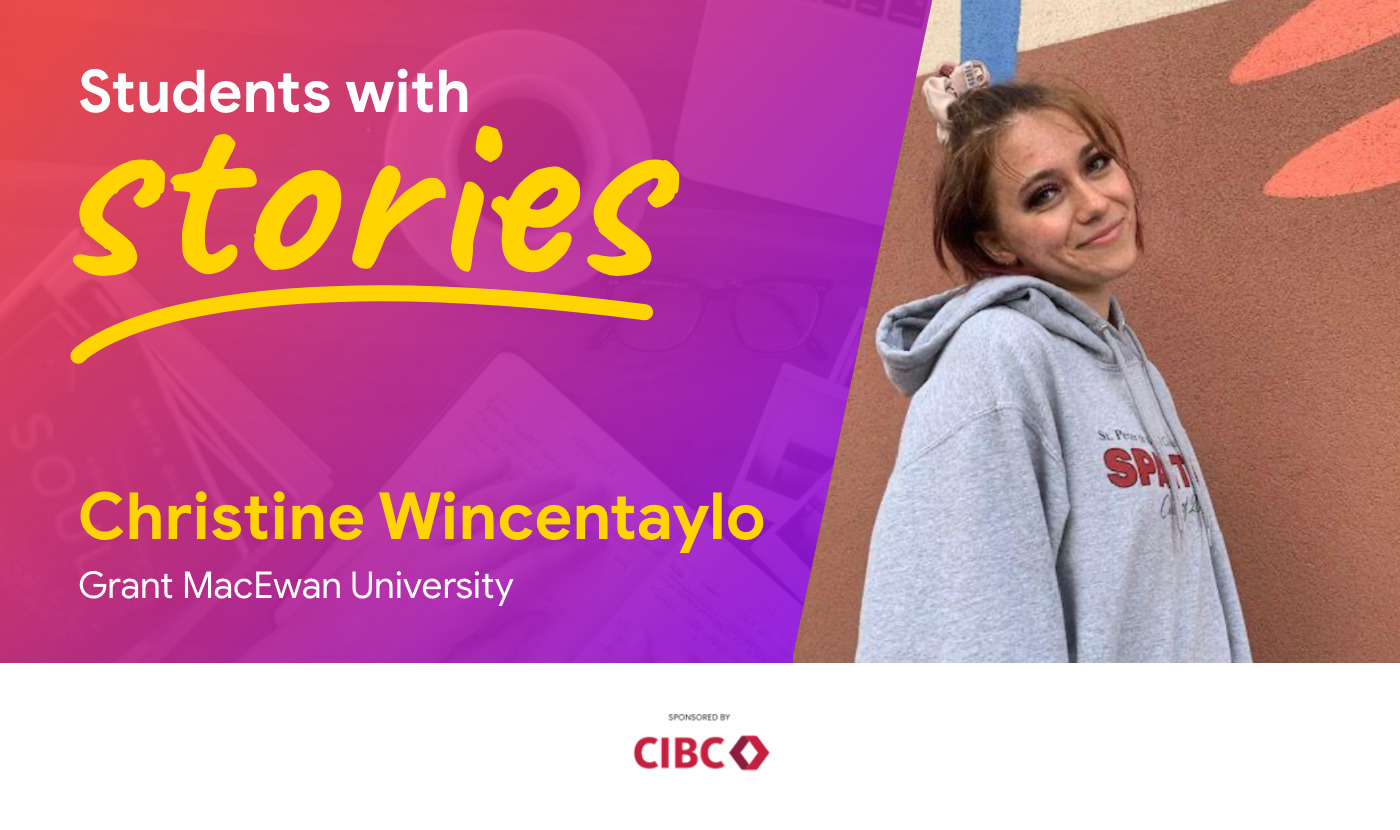If you or someone you know is struggling with mental health, please consider available support resources like jack.org or Kids Help Phone. You are not alone!
Christine Wincentaylo is a Social Work student at Grant MacEwan University in Treaty 6 (Amiskwaciywaskahikan) and a speaker, advocate and resource within the mental health space.
Since many of us can agree that maintaining mental health and happiness is tough at the best of times (let alone during a lingering global pandemic), we interviewed Christine to learn more about her ideas on combating mental illness, especially within at-risk communities.
Here’s what we learned.
Can you tell us a little bit about yourself?
Before COVID-19 I enjoyed singing and playing my guitar at cafes. Though the pandemic put more restrictions around those passions, I also love to hike, run and work out at the gym. I am extremely interested in baking and I love building things.
Can you expand a bit on what A Tin A Day (ATAD) is and your motivation behind it?
Growing up I struggled with mental illness and due to my family’s financial standing, finding adequate resources and support was difficult. I started volunteering as soon as I could drive which is how I discovered my love for community, building relationships, and making a positive impact in my city.
I had an idea to create a project for social change, to help those struggling with mental health and financial barriers while trying to be kind to the planet at the same time. I know how difficult it has been for many during this pandemic. If anything, it has highlighted and brought to the surface a lot of financial barriers and inequalities within our societies.
Having experienced a lot of those barriers throughout my youth and personal experiences shaping the way I have managed adversity, I thought that I would be in a strong position to share my story and channel my commitment towards a brighter future into a project called “A Tin A Day” (ATAD).
A Tin A Day promotes social wellness within homeless populations in Edmonton, AB and the surrounding areas by providing self-care tins to those that need them. The tins include essentials all compacted in a container. These tins are donated; otherwise, they would have ended up in the landfill.
Given the common connection between mental illness and the homeless, A Tin A Day aims to combat many of the causes for homelessness at its roots. There is also QR code inside the tin lids which directs individuals to mental health resources on the “A Tin A Day” website. The QR code is accessible for individuals with any technology that can scan a QR code. Ultimately, I am passionate about exploring new and creative ways to make mental health resources & support accessible to all Edmontonians.
How did COVID-19 influence or impact your initiative?
The pandemic pushed me to take my project further. I had more time to think, which allowed me to talk to lower-income and homeless individuals and learn more about what potential aid and solutions could look like. Now more than ever, I wanted action. I used the unknown of this pandemic to do something impactful.
What do you want students or other Canadians to know about A Tin A Day (ATAD)?
Continue exploring conversations around mental health. I want to make help as accessible as possible, especially now when the world can feel so overwhelming.
Please reach out if you want to share resources or ideas for my organization or if you need to talk. I am always available and open to new ideas!
What has been the biggest learning curve for you since starting A Tin A Day (ATAD) and what kinds of factors and/or strategies have helped you tackle them?
While technology has in some ways helped our communities develop so many day-to-day efficiencies, it’s still limiting and inaccessible to many people that have been pushed to the margins.
My project has a QR code, but if individuals don’t have a phone or access to any scanner, then the “accessibility” issue is still prevalent. I have been in contact with a few phone companies and will be hopefully creating some collaboration with them for phones to be affordable and manageable for our at-risk communities in Edmonton.
What impact do you think your initiative has or could have on the homeless populations in the Edmonton area?
I believe it is and will continue to unpack the stigma of mental health and illness and the multiple systems that contribute to it. Bridging the accessibility gap between technology and the homeless population could have a big influence.
What has been your biggest accomplishment so far during COVID-19 and why? How did you accomplish it?
Creating a mental health website has been a great accomplishment of mine. I feel so motivated to contribute to a brighter world. Everyone has their own struggles and creating this website has helped me connect with people, organizations, and with myself.
This project has been a great way to channel my emotions towards helping others and the community.
Do you have anything you’d like to add that you didn’t get a chance to speak to in the above questions?
Many people struggle in silence, even during times where support and help are encouraged. Take care of yourself first. Also, I am slowly creating more ways to integrate different languages and traditional approaches for everyone to have resources that give comfort and create connection and accessibility for everyone who needs the resources.
What is your biggest pain point right now, and what kind of support do you need or would benefit from?
Finding enough resources to advocate and support my project can be challenging. Any organizations, individuals, or groups that are interested in contributing to my project would be greatly appreciated!

More great content for students
*Opinions expressed are those of the author, and not necessarily those of Student Life Network or their partners.

 Sponsored
Sponsored


